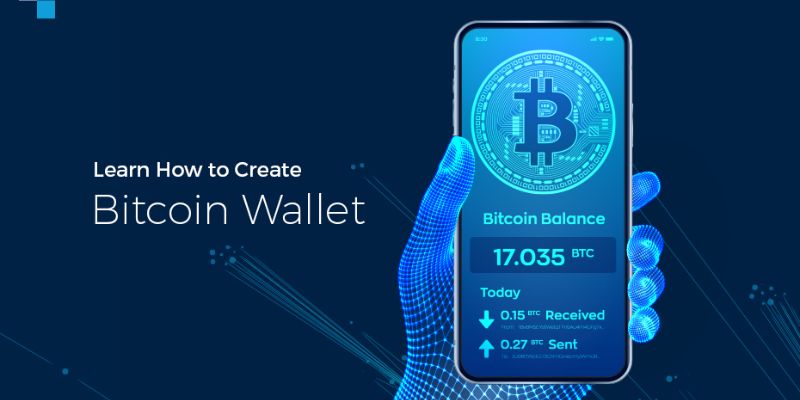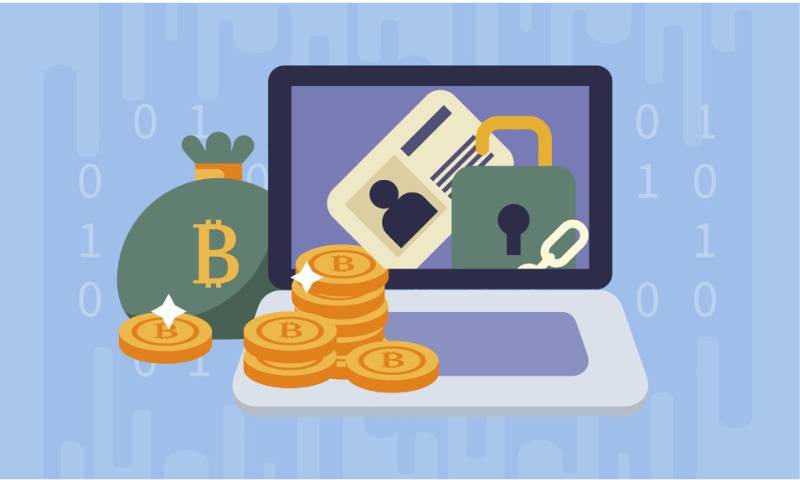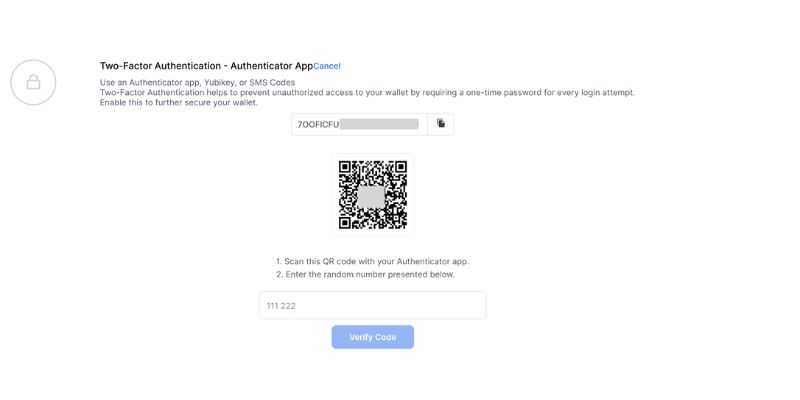Create a Bitcoin wallet – think it’s too complex? Guess again! Here’s the lowdown: in 5 simple steps, you can dive into the world of digital currency and get a grip on your fintech future. It’s like unlocking a chest of digital gold, but easier! You don’t need to be a tech wizard; I’ve got your back, guiding you from start to finish. Unearth the secrets to choosing a wallet that fits your life, lock down your coins like Fort Knox, and nail every transaction. Ready to be the master of your coin? Let’s roll up our sleeves and get started!
Understanding the Types of Bitcoin Wallets: Choose the Right One for You
Exploring Mobile and Desktop Wallets
When choosing a Bitcoin wallet, think about how you’ll use it. Will you check your balance on the go or make fast payments? Then, a mobile Bitcoin wallet is your best bet. Mobile wallets are safe, easy to use, and perfect for daily Bitcoin use. They turn your phone into a wallet, letting you pay with a simple scan. Plus, mobile wallets can back up to the cloud, keeping your Bitcoin safe even if your phone is lost.
But, if you prefer using a computer and want more control, go for a desktop wallet. These wallets offer more features than most mobile versions. You can manage your funds and see your full transaction history. Desktop wallets store your private keys on your computer. This means you need to keep your computer free from viruses and malware.
A key step in setting up either a mobile or desktop wallet is writing down your wallet seed phrase. This phrase lets you restore your wallet if anything goes wrong. Remember, if you lose your seed phrase, you’re out of luck. So keep it in a safe place!
Hardware Wallets vs. Paper Wallets: The Security Trade-off
Now let’s talk security. If you’re super serious about keeping your Bitcoin safe, you want a hardware wallet. These nifty gadgets keep your keys offline, away from hackers. To make a transaction, you just plug them into your computer or pair them via Bluetooth. Once done, they go right back into hiding. Hardware wallets protect your Bitcoin like a digital treasure chest.
On the other flank, paper wallets may seem old-school, but don’t write them off. This is literally writing your Bitcoin keys on a piece of paper. It’s a type of cold storage, meaning it’s not connected to the internet. You can generate a paper wallet offline and keep your Bitcoin away from digital threats.
But here comes the trade-off: paper wallets can be easy to lose or damage. And if you’re not technical, making a secure paper wallet can be tricky. Make sure to keep it in a safe, dry place, like a safe or a deposit box.
Remember, different wallets serve different needs. Think of your habits, needs, and how much Bitcoin you plan to store. For daily use, mobile or desktop wallets might be right. But if you’re storing a lot of Bitcoin and want peace of mind, a hardware wallet or an extremely well-secured paper wallet could be the way to go. Always remember, more security often means less convenience. So, pick the balance that’s best for you. Keep your eyes peeled on managing your private keys with utmost care. This is critical to making sure your Bitcoin remains yours, now and forever.
Setting Up Your Wallet: A Step-by-Step Guide
Installing and Encrypting Your Wallet
Ready to set up your Bitcoin storage? Great! First, pick your wallet. Think of it like choosing a backpack. It must fit your stuff and be tough! Go for hardware wallets if security is your top concern. They’re like a safe for your Bitcoin.
Want something handy? Mobile wallets have you covered. They turn your phone into a pocket-sized vault. Prefer to manage your funds on a computer? Desktop wallets offer advantages too, like more space to organize your digital wealth.
Once you download the best Bitcoin wallet app for your needs, it’s time to boost its defenses. Encrypting your wallet is key. It’s like setting a strong lock code nobody else knows. This step keeps your coins safe from sneaky hands.
Generating and Managing Your Bitcoin Address
Now, let’s get you a Bitcoin address. It’s the ‘home’ where your Bitcoin will live. Think of it like your tree house’s secret location. Making one is easier than you think. When you set up your wallet, it often makes one for you!
To keep your home safe, manage your keys with care. Don’t share them, or someone else might climb into your tree house. Keep an eye on your wallet address too. It’s how you keep track of all the comings and goings of your Bitcoin.
When you get your address, it’s like opening your tree house door. Now you can send and receive Bitcoin with anyone in the world. Remember, every transaction you make is like footsteps to and from your tree house. The cool part? You can have as many secret paths (addresses) as you want, keeping your tracks covered and your treasure secure.
Remember this: your Bitcoin wallet is your private space in the vast digital wilderness. By choosing the right one, setting strong locks (encryption), and managing your secret locations (addresses), you’ll be on your way to unleashing your digital wealth safely and smartly. Welcome to the Bitcoin adventure, fellow explorer!
Securing Your Digital Wealth: Wallet Security Measures
The Importance of Wallet Backups and Seed Phrases
Your Bitcoin wallet is like a safe. If the key to your safe is lost, you can’t open it, right? That’s where a wallet backup comes in. A backup helps you get into your wallet if your computer or phone dies. Think of it as your plan B.
To set up a backup, you need your wallet seed phrase. This is a special set of words given to you when you first make your Bitcoin wallet. Write these words on paper and keep them safe. If your device gets lost or breaks, use the seed phrase to get your money back.
Why is this so important? If someone else grabs your seed phrase, they can steal your Bitcoins. So keep it secret and safe. Don’t just write it on a sticky note and slap it on your monitor. Lock it away like you would with a birth certificate or a stash of cash.
Enhancing Security with Multi-Signature and HD Wallet Features
For top-notch security, you want a multi-signature setup. This is like a lock that requires two or more keys to open. With a multi-signature wallet, you need more than one approval to spend your Bitcoins. It’s like needing both a key and a code to unlock a safe. For anyone trying to take your Bitcoins, this is a big stone wall.
HD or hierarchical deterministic wallets are another bonus. These wallets create a new address for every transaction. That way, no one can link all your transactions to one address. It’s like changing your clothes and look every single day. No one can track you!
When you’re choosing a Bitcoin wallet, think about how much safety you need. Do you want a simple lock or a whole security system? Maybe you’re okay with a mobile Bitcoin wallet, great for small amounts and daily spending. But for larger amounts of digital gold, go for a hardware wallet or even cold storage. These are like underground vaults for your Bitcoins—cold, guarded, and super secure.
Scared of messing up? Don’t sweat it. If you know how to shop online, you can set up Bitcoin storage. Just follow easy steps and stick to trusted wallet apps and providers. And remember, the best Bitcoin wallets are the ones you can use correctly. So take your time and do it right.
Storing your Bitcoins is no casual game – it’s serious business. Protect your wealth with backups, solid passphrases, and forward-thinking features. That way, even if the unexpected happens, your digital treasure will be snug as a bug. And with these measures, you can rest easy, knowing your digital wealth is locked down tight.
Managing Your Bitcoin Wallet: Transactions and Maintenance
Adding Funds and Understanding Wallet Fees
Adding funds to your Bitcoin wallet is easy. Find your wallet address, then send Bitcoins to it. Fees apply when you send, not receive. Fees pay for network support and faster transactions.
Wallet providers might set these fees, or you might choose. The higher the fee, the faster the confirm. Cheap fees mean slow transacts. Think of fees as postage. Heavier packages cost more to send quickly. It’s the same with Bitcoin transactions.
Use your wallet app to scan a QR code or copy the address. Always double-check it. Mistakes with addresses can’t be fixed. For low fees, transact during off-peak times.
Restoring Your Wallet and Recovering Funds After Loss or Theft
Losing access to your Bitcoin wallet is scary. But you can often recover your funds with the right steps.
First, keep your seed phrase safe. This is a set of words given when you set up your wallet. It’s the key to your digital wealth. Write it down, store it safe. It can restore your wallet on any device.
If your wallet’s lost or stolen, get a new device. Use your seed phrase to restore your wallet. Make sure your new wallet is secure before you restore. This means choosing a strong passphrase, encrypting your device, and updating software.
Multi-signature wallets add another layer. They need more than one key to access funds. This makes theft much harder.
Remember, staying safe means planning ahead. Backup your wallet, write down your seed phrase, and use secure passphrases. This way, even if you lose one key, you’re not locked out of your digital cash.
In this post, we explored how to pick and set up a Bitcoin wallet, and secure our digital cash. We looked at mobile, desktop, hardware, and paper wallets. Each has its own balance of ease and safety. Next, we walked through installing a wallet and keeping your Bitcoin address safe. Backups and tricky phrases called ‘seed phrases’ keep your stash safe. We also learned about multi-signature options and HD wallets that boost security.
Finally, we covered how to manage your wallet, add money, handle fees, and what to do if something goes wrong. Remember, staying informed about wallet options and security keeps your Bitcoin secure. Get the right wallet for you and follow these steps to protect your investment. Stay safe and smart with your digital wealth!
Q&A :
How do I set up a Bitcoin wallet for the first time?
When setting up a Bitcoin wallet for the first time, you’ll need to choose between several types of wallets, such as a software wallet, hardware wallet, or mobile wallet. Once selected, download the necessary software or app, or purchase the hardware wallet. Follow the on-screen instructions to create a new wallet, which typically includes setting up a strong password and backup recovery phrase. Remember to keep your private key and recovery phrase secure and never share them with anyone.
What types of Bitcoin wallets are available?
There are mainly five types of Bitcoin wallets: desktop wallets, mobile wallets, web wallets, hardware wallets, and paper wallets. Each type has its own balance of security and convenience. Desktop wallets are software programs installed on your computer; mobile wallets are apps on your smartphone; web wallets are accessed through internet browsers; hardware wallets are physical devices that store your bitcoins offline; and paper wallets are physical documents that contain your public and private keys.
Are Bitcoin wallets free to create?
Most Bitcoin wallets, especially software and mobile wallets, are free to download and create. However, you may incur costs if you choose to purchase a hardware wallet, which offers additional security for storing your bitcoins offline. Additionally, sending or receiving transactions may require network fees, which are not associated with wallet creation but rather with the blockchain network itself.
Can I have multiple Bitcoin wallets?
Yes, you can have multiple Bitcoin wallets for different purposes or to manage your funds in different ways. For instance, you might use a mobile wallet for daily transactions, a hardware wallet for long-term storage, or multiple wallets to separate personal funds from business transactions. Managing several wallets, however, requires careful handling to ensure that you do not lose track of your assets.
Is it safe to store a large amount of Bitcoin in a wallet?
Storing a large amount of Bitcoin in a single wallet, especially a software or mobile wallet, comes with risks such as potential exposure to hacks or malware. To increase security, it is recommended to use a hardware wallet for storing significant amounts of Bitcoin. Regardless of the wallet type, practicing good security measures like using strong passwords, enabling two-factor authentication, and keeping your recovery phrase in a secure location are crucial steps to protect your assets.






